Topics List
Nov. 4, 2016 Updated
Turkey hands over samples to Japan for space environment long-term exposure experiment to be conducted under Turkey-Japan cooperation on Kibo utilization! Samples to be loaded onboard “KOUNOTORI6”.
|
In September, JAXA and the Ministry of Transport, Maritime Affairs and Communications (MTMAC) of the Republic of Turkey signed a cooperation agreement on CubeSat deployment from the International Space Station (ISS) Japanese Experiment Module (Kibo) and exposure experiments using Experiment Handrail Attachment Mechanism (ExHAM). In this regard, samples from Tukey were handed over to JAXA today for the first joint space environment exposure experiment. This summer, JAXA initiated a full-scale technical examination and international coordination of the loading of samples toward the joint Kibo utilization project. The first experiment sample was hand-carried by Turkish officials to JAXA Tsukuba Space Center on November 2. The samples are confirmed that they are ready for the experiment in Kibo, and will be transported to “KOUNOTORI6” (HTV6) in Tanegashima Space Center, which is scheduled to be launched on December 9.
MTMAC comments on completing the delivery of samplesAs Directorate General of Aeronautics and Space Technologies, the Ministry of Transport, Maritime and Communication of the Republic of Turkey, we are pleased with the studies which is conducted under the Memorandum of Understanding (MoU) on Satellite and Space Technologies signed between Turkey and Japan in 2010. Within this cooperation framework, we will perform joint experiments on International Space Station Japanese Experiment Module (KIBO) and jointly deploy a CubeSat from the International Space Station. We believe that such studies will serve as a bridge to strengthen the cooperation between our countries, and hope to elevate our cooperation to much higher levels than it is today. In this context, we would like to thank the Ministry of Education, Culture, Sports, Science and Technology (MEXT), the Minister for Space Policy of Japan and JAXA for their valuable contribution to our joint projects. We hope that our collaborative relationship will be further enhance especially in the space technologies field and Turkey-Japan friendship will continue to develop heretofore in the future. |
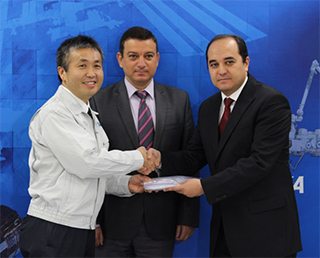 |
|---|
Sep. 30, 2016 Updated
IAF President Kiyoshi Higuchi Completes his Term, Handing Over to Dr. Le Gall of CNES
|
Mr. Kiyoshi Higuchi of JAXA completed his term as President of the International Astronautical Federation (IAF) at the 67th International Astronautical Congress (IAC) held in Guadalajara in September. He handed the Presidency over to Dr. Le Gall, President of the French Space Agency (CNES). IAF is one of the co-organizers of the IAC. During his four-year term, Mr. Higuchi held four successful IACs and brought many changes to the Federation including the amendment of the IAF Constitution, increasing the membership by 81 to reach a total of 327 members, and promoting the involvement of emerging actors and the young generation. Photo: Mr. Higuchi giving the opening speech at the 67th IAC |
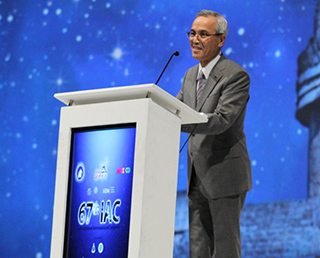 |
|---|
Sep. 27, 2016 Updated
UNOOSA and JAXA open second round of KiboCUBE
|
JAXA and the United Nations Office for Outer Space Affairs (UNOOSA) launched a three year “KiboCUBE” programme in September 2015, which offered developing countries the opportunity to deploy cube satellites from the Japanese Experiment Module “Kibo” on the International Space Station (ISS). JAXA held a media briefing with UNOOSA in the 67th International Astronautical Congress (IAC 2016) at Guadalajara, Mexico. During the briefing, there was an announcement of the second round along with introduction of the programme. Moreover, the representative of the University of Nairobi presented a summary of a satellite “1KUNS-PF”, which was the first to benefit from KiboCUBE. Photo: Media Briefing at IAC 2016 in Guadalajara, Mexico on 26 September 2016 Dr. Koichi WAKATA, ISS Program Manager in JAXA (left), Simonetta Di Pippo, Director of UNOOSA (center) and Professor Mwangi Mbuthia, Dean, Department of Engineering, the University of Nairobi (right) |
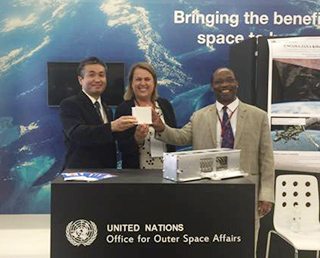 |
|---|
Sep. 26, 2016 Updated
Dr. Okumura Participated in the 67th IAC in Guadalajara
|
On September 26-30, Dr. Okumura and a number of JAXA staff participated in the International Astronautical Congress (IAC) held in Guadalajara, Mexico. This year’s IAC was attended by a record number of 5,000 participants from over 300 member organizations including space agencies, universities and industry. Dr. Okumura joined the Heads of Agencies Panel and the Space and Climate event, introducing JAXA’s activities as well as the importance of international cooperation. Photo: Heads of Agencies Panel at the 67th IAC 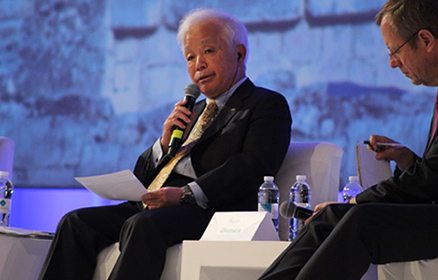 |
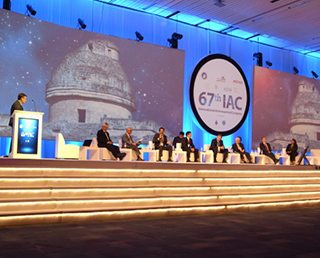 |
|---|
Sep. 23, 2016 Updated
Dr. Okumura Visits U.S.A., Delivers Speeches in Washington D.C.
|
On September 22-23, President Naoki Okumura of JAXA visited Washington D.C. and met with the heads of NASA and NOAA, reaffirming to further strengthen mutual cooperation. Dr. Okumura also gave speeches at the Dirksen Senate Office Building and the Japanese Ambassador’s residence. The talks, attended by many participants related to the Congress, space agencies and industry, were valuable opportunities to provide an overview of the Japanese space plans and activities including future perspectives. Photo: Dr. Okumura speaks at the Japanese Ambassador’s residence |
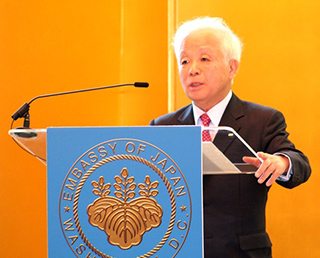 |
|---|
Sep. 9, 2016 Updated
JAXA and the MTMAC, Republic of Turkey sign a Cooperation Agreement
|
On September 8, 2016, Mr. Yuichi Yamaura, Vice President of the JAXA and H.E. Dr. Cihan Kanl?goz, Director General of the Aeronautics and Space Technologies, the Ministry of Transport, Maritime Affairs and Communications of the Republic of Turkey, newly signed a Cooperation Arrangement concerning the utilization of the International Space Station (ISS) Japanese Experiment Module (Kibo). Photo:Mr. Yamaura, JAXA Vice President (right) and H.E. Dr.Kanlıgöz, Director General of Ministry of Transport, Maritime Affairs and Communications of the Republic of Turkey (left) shake hands after signing the agreement |
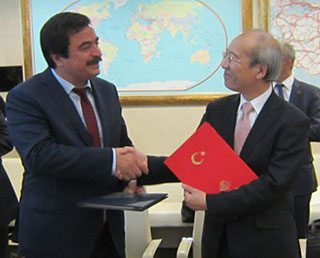 |
|---|
Sep. 2, 2016 Updated
JICA Earth Observation Capacity Development Program Focusing on Rader (South Africa)/ Tanegashima Space Center & Tsukuba Space Center
|
On June 15 and 16, 2016, remote sensing specialists namely from the South African National Space Agency (SANSA), together with the officers from the South African Maritime Safety Authority (SAMSA) and Department of Agriculture, Forestry and Fisheries (DAFF) visited JAXA’s Tanegashima Space Center and Tsukuba Space Center as part of the Earth Observation Capacity Development Program Focusing on Rader organized by the Japan International Cooperation Agency (JICA). The visit to Japan was a second part of a three-year JICA Program, which welcomed participants from a variety of agencies depending on the purposes of the satellite data use. Program participants visited the Tanegashima Space Center on June 15 and the Tsukuba Space Center on the following day. This was followed up with a seminar on JAXA’s earth observation activities, including earth-observation satellites such as DAICHI-2 (ALOS-2), and a lively Q&A session. Photo: Tsukuba Space Center 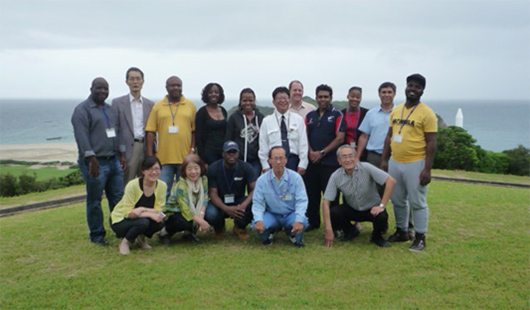
Photo: Tanegashima Space Center |
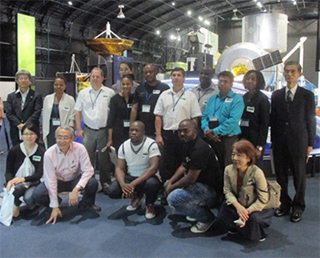 |
|---|
Aug. 25, 2016 Updated
University of Nairobi team selected for UNOOSA-JAXA KiboCUBE project
|
The United Nations Office for Outer Space Affairs (UNOOSA) and JAXA have selected a team from the University of Nairobi to be the first to benefit from the UNOOSA-JAXA KiboCUBE programme. Messages from Key PeopleKoichi Wakata, ISS Program Manager/JEM Mission Operations and Integration CenterI am excited on the announcement by a cooperative effort by the United Nations Office for Outer Space Affairs (UNOOSA) and JAXA that a small satellite developed by University of Nairobi of Republic of Kenya will be deployed from the Japanese Experiment Module “Kibo” onboard the International Space Station (ISS) as the first satellite from the country. As “Kibo” is the only module onboard the ISS that has a capability to deploy small satellites, I am proud that JAXA is contributing to the development of space technologies of the various countries around the world utilizing the unique capacity of “Kibo”. Ms.Simonetta Di Pippo, UNOOSA Director“This is a very exciting moment and an important step in UNOOSA’s movement towards tangible initiatives in our capacity-building efforts. Innovative projects like KiboCUBE can achieve concrete results and have a real impact on space science and technology development for the benefit of all.” Prof. J. Mwangi Mbuthia, Dean, School of Engineering/University of Nairobi“As the winner of the call for the the opportunity to launch our Cubesat through Japanese Experiment Module “Kibo” as a ‘KiboCUBE’ program, the University of Nairobi is very excited and the team plans to use its KiboCUBE CubeSat to test technologies developed for the future launch of a larger earth observation satellite. The team also hopes to apply data acquired from its CubeSat deployment in monitoring of wildlife migration, agricultural activities in coastal and semi-arid areas.” |
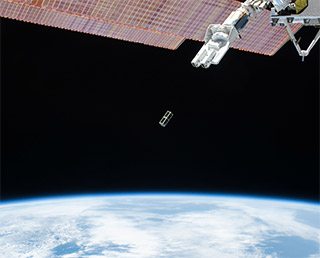 |
|---|
Jun. 15, 2016 Updated
First shot of earth images captured by the Philippine satellite deployed by Kibo
|
On June 2, Tohoku University released images of the earth taken by ‘DIWATA-1’, the first Philippine microsatellite successfully deployed from the ISS by Japanese Experiment Module, ‘Kibo’, on April 27. This satellite is one of a realization of international cooperation in peaceful uses of outer space through the close collaboration between Japan and the Philippines. A team of young engineers from the Department of Science and Technology (DOST) of the Republic of the Philippines, in collaboration withTohoku University and Hokkaido University were responsible for the development and production of this satellite. JAXA was in charge of its launch and deployment into orbit. The success of deploying this 50 kg-class microsatellite also signified that JAXA has enhanced its satellite deployment capacity in addition to that of the CubeSat-class satellite. Photo:Satellite images of the Tohoku province, Japan, captured by DIWATA-1 on board with a wide field color camera (released by Tohoku University )
|
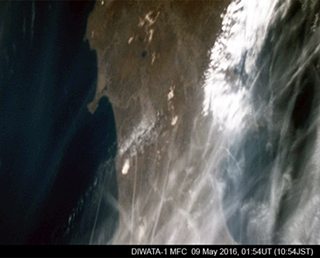 |
|---|
Jun. 15, 2016 Updated
JAXA holds its 1st Joint Committee with United Arab Emirates Space Agency (UAESA)
|
The first joint committee between JAXA and the United Arab Emirates Space Agency (UAESA) was held on Wednesday, May 11, 2016 where both agencies entered into an interagency agreement earlier on March 22. The conference was chaired by Mr. Yamaura, Vice President of JAXA Members, and was attended by UAESA members (H.E. Dr. Khalifa Mohammad Thani Al-Romaithi, Chairman, Dr. Mohammed Naser Al Ahbabi, Director General, Mr. Hamad Al Mutawa, Head of Strategic Partnerships) and Dr. Ilias M. Fernini Associate Professor from University of Sharjah, UAE). Participating members and representatives of various collaborative projects opened up the conference with current updates on the successful deployment of small satellites from the Japanese Experiment Module (‘Kibo’, which means ‘hope’ in Japanese) from the ISS, and the materials science experiments conducted with the Exposed Experiment Handrail Attachment Mechanism (ExHAM) of Kibo’s Exposed Facility. They also discussed the interoperability of deep space network and explored potential future collaborations. During the visit, the Japanese Government (Cabinet Office, Ministry of Education, Culture, Sports, Science and Technology, and Ministry of Economy, Trade and Industry) also signed a Memorandum of Cooperation with the UAESA on promoting the future exchange and collaboration in R&D, expertise/capacity development, and the creation of space-related industries between the two countries. Photo: At Tsukuba Space Center (TKSC)  Photo: 1st Joint Committee between JAXA and UAESA |
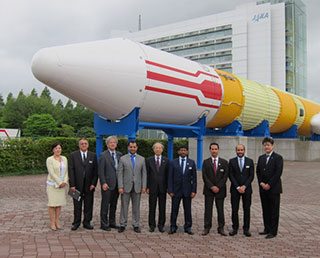 |
|---|
May 16, 2016 Updated
JAXA Vice President Shizuo Yamamoto participated in the panel discussion of the 10th SPIE Asia-Pacific Remote Sensing Symposium
|
The 10th International Society for Optics and Photonics (SPIE) Asia-Pacific Remote Sensing Symposium (APRS) was held in New Delhi, India from April 4 to 7, 2016. A special panel discussion featuring top-level space agency leaders from around the world was organized in the same symposium that commemorated the inaugural APRS conference in India and the 10th anniversary of SPIE. Mr. Shizuo Yamamoto, Vice President of JAXA (in charge of earth observations) was one of the panelists. Photo: Mr. A. S. Kiran Kumar, Chairman of ISRO on the right with Mr. Shizuo Yamamoto, Vice President of JAXA at the conference venue. In the session led by space agency heads, Mr. Yamamoto cited real-world instances (using JAXA’s observation data) of how space technologies have become an indispensable element in solving the challenges posed by disaster prevention and climate change as part of the social infrastructure. He also introduced future plans and the activities of the Asia-Pacific Regional Space Agency Forum (APRSAF) as a regional collaboration. In the panel discussion, space agency heads discussed various challenges and effective utilization strategies to manage global climate change and natural disasters. They also actively exchanged opinions on the integration and standardization of observation data collected by each national agency, and the promotion of further cooperation and international collaboration between ground networks and space agencies. Reinforcement of international cooperation by leveraging space technology to its fullest is also required to deal with various global issues. 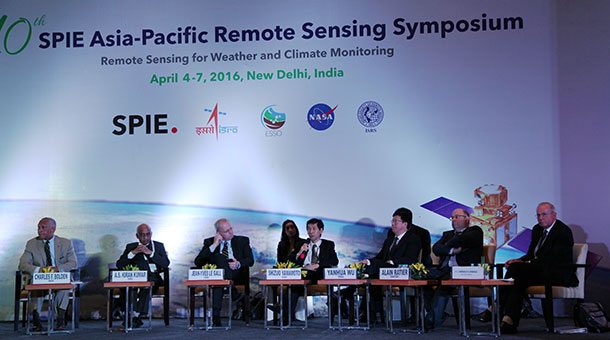 Photo: Special panel discussion by space agency leaders (April 4) From left to right, Maj. Gen. Charles Frank Bolden, Jr. – Administrator of the National Aeronautics and Space Administration (NASA, USA), Mr. A. S. Kiran Kumar – Chairman of the Indian Space Research Organization (ISRO, India), Mr. Jean-Yves Le Gall – President of the Centre National D’Études Spatiales (CNES, France), Mr. Shizuo Yamamoto – Vice President of Japan Space Exploration Agency (JAXA, Japan), Mr. Yan Hua Wu – Deputy Administrator of the Chinese National Space Agency (CNSA, China), Mr. Alain Ratier – Director-General of European Organisation for the Exploitation of Meteorological Satellites (EUMETSAT), Dr. Francisco Javier Mendieta Jiménez – General Director of the Mexican Space Agency (AEM, Mexico). |
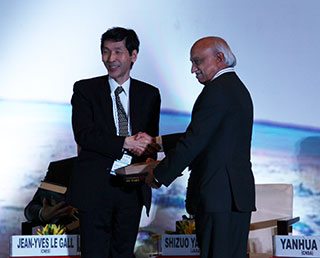 |
|---|
Mar. 22, 2016 Updated
JAXA and UAESA sign a Cooperation Arrangement
|
On March 22, 2016, Dr. Naoki Okumura, President of the JAXA and H.E Dr. Khalifa Mohammed Thani Al-Romaithi, Chairman of the Board of Directors for the UAESA, newly signed an “Arrangement between the Japan Aerospace Exploration Agency and the United Arab Emirates Space Agency regarding Cooperation in Space Activities and Use of Outer Space for Peaceful Purposes” to strengthen the cooperation between JAXA and UAESA. |
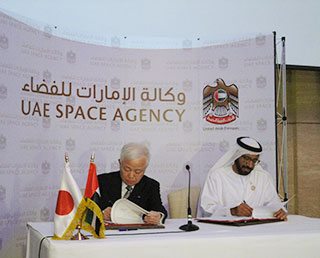 |
|---|
Feb. 25, 2016 Updated
DLR and JAXA strengthen cooperation
|
On February 25, 2016, the German Aerospace Center (Deutsches Zentrum für Luft- und Raumfahrt; DLR) and JAXA have signed an “Inter Agency Arrangement between DLR and JAXA for Strategic Partnership” at the German Embassy in Tokyo, Japan. With this arrangement, both partners intend to jointly undertake the new role of space agencies and significantly contribute to the advancement of the world’s space development.
In this context, DLR and JAXA intend to collaborate in the area of Space Utilization and R&D, use, for example, L- and X-band radar technologies for Earth observation, work together in disaster management, and conduct study into reusable launchers. Another important area is the exploration of the Solar System; at present, the DLR MASCOT lander is on board the JAXA Hayabusa 2 spacecraft, en route to asteroid Ryugu (previously 1999 JU3), where it will land after 2018 and explore its surface. Germany and Japan also utilise the International Space Station (ISS) intensively to answer questions in the fields of medicine, materials science and fundamental research. Photo: JAXA President Naoki Okumura (left) and Chair of the DLR Executive Board, Pascale Ehrenfreund (right) shake hands after signing. |
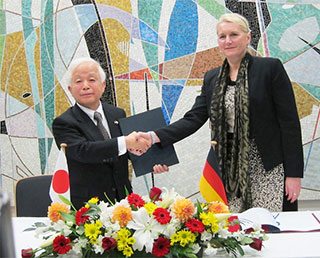 |
|---|
Feb. 18, 2016 Updated
Space Education Seminar in the Philippines
|
JAXA Space Education Center offers a space education seminar for educators in various Asian countries under the framework of the Space Education Working Group (SE WG) of the Asia-Pacific Regional Space Agency Forum (APRSAF). |
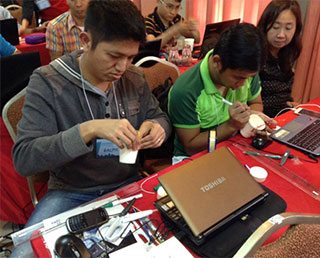 |
|---|
Feb. 9, 2016 Updated
Presentation at the Space Exploration Education Conference (SEEC) in Houston, Texas.
|
JAXA sends Japanese educators who engage in space education to the Space Exploration Education Conference (SEEC) held in Houston every year. This year’s session from JAXA was performed by Mr. Aikawa from Okinawa Prefecture and Ms. Fukai from Hiroshima Prefecture. Mr. Aikawa’s presentation included constructing a plastic propeller stick and Ms. Fukai’s presentation had participants making an LED optical communication device. |
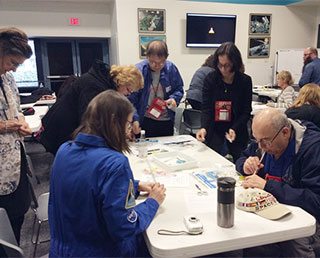 |
|---|
Jan. 22, 2016 Updated
Meeting Held Between DOST Delegation and JAXA President Dr. Okumura
– First Filipino CubeSat delivered to the JAXA Tsukuba Space Center (TKSC) in preparation for deployment from the International Space Station (ISS) Japanese Experiment Module (Kibo) –On January 12, 2016, Dr. Amelia P. Guevara, Undersecretary for Research & Development, and Dr. Rowena Cristina L. Guevara, Undersecretary for Science & Technology at DOST (Department of Science Technology of the Philippines) visited the JAXA Headquarters in Tokyo and had a meeting with Dr. Naoki Okumura, President of JAXA. They visited Japan in conjunction with the development of DIWATA -1 (DIWATA means fairy in Filipino), the first Filipino CubeSat developed jointly by DOST, the University of the Philippines, Tohoku University and Hokkaido University. DIWATA-1 will be the first 50KG class CubeSat to be deployed from“Kibo”by JAXA’s JEM Small Satellite Orbital Deployer (J-SSOD). The cost of deployment will be borne by the government of the Philippines, and an agreement was drawn up between JAXA and Tohoku University to allow DIWATA-1 to be deployed from “Kibo” for a fee. Photo Right: From left to right, Dr. Rowena Cristina L. Guevara, Undersecretary for Science & Technology at DOST, Dr. Amelia P. Guevara, Undersecretary for Research & Development at DOST and Dr. Naoki Okumura, President of JAXA 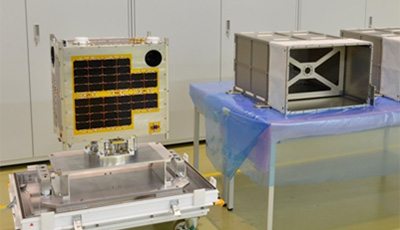
DIWATA-1(left), 50kg Class J-SSOD Container (right) In the meeting between the DOST delegation and Dr. Okumura, both parties confirmed that the joint development and active acceptance of Filipino students has facilitated interpersonal exchanges, and that the joint project has been progressing smoothly. They also talked about the importance of working together to solve common issues by utilizing satellite data As the 23rd session of the Asia Pacific Regional Space Agency Forum (APRSAF-23) is scheduled to be held in the Philippines at the end of 2016, they also confirmed their expectation for increased interchange and enhanced cooperation through this meeting. On the following day, January 13, a hand-over ceremony of DIWATA-1 to JAXA and a press conference were held at Tsukuba Space Center. The CubeSat is equipped with four kinds of Earth observation cameras, and will be utilized for disaster monitoring, agriculture, forestry and fishery. |
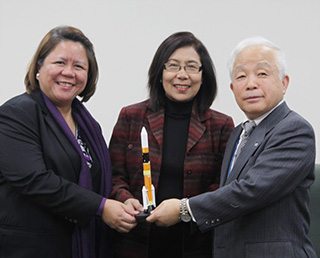 |
|---|
Jan. 20, 2016 Updated
Revision of the Memorandum of Cooperation between JAXA and LAPAN
|
On December 3, 2015, Dr. Thomas Djamaluddin, Chairman of the Indonesian National Institute of Aeronautics and Space (LAPAN) and Naoki Okumura, President of JAXA signed an agreement that has been revised to strengthen cooperation between JAXA and LAPAN in the field of aerospace research and development.
|
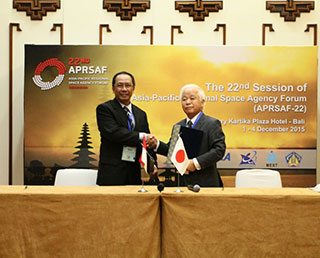 |
|---|
Jan. 6, 2016 Updated
APRSAF-22 successfully held in Bali, Indonesia
|
The 22nd session of the Asia-Pacific Regional Space Agency Forum (APRSAF-22) was successfully held from December 1 to 4, 2015 in Bali, Indonesia, jointly organized by the Ministry of Research, Technology and Higher Education of Indonesia(RISTEK-DIKTI), the National Institute of Aeronautics and Space of Indonesia (LAPAN), the Ministry of Education, Culture, Sports, Science and Technology of Japan (MEXT) and the Japan Aerospace Exploration Agency (JAXA). Photo Top: The APRSAF-22 plenary session, Denpasar, Bali, Indonesia 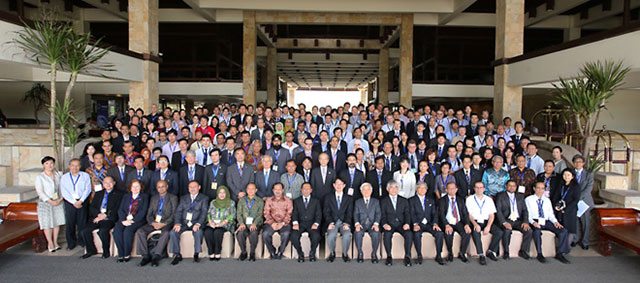 |
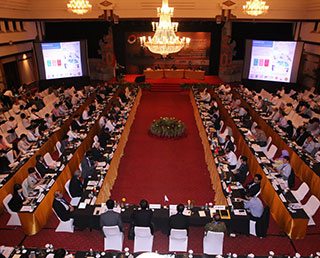 |
|---|
Dec. 21, 2015 Updated
JICA and JAXA Announce Forest Monitoring System Using ALOS-2 Satellite
Constant monitoring of deforestation throughout the tropics and open data access on the InternetOn December 1, the Japan International Cooperation Agency (JICA) and the Japan Aerospace Exploration Agency (JAXA) announced the Initiative for Improvement of Forest Governance at the twenty-first session of the Conference of the Parties (COP21) to the United Nations Framework Convention on Climate Change (UNFCCC) in Paris. The initiative will create a new tropical forest monitoring system that tracks deforestation and forest loss with JAXA’s Advanced Land Observing Satellite-2 (ALOS-2). The initiative will be conducted by a partnership between JICA and JAXA, and supporting private corporations are expected to join the initiative to contribute to the conservation of the world’s tropical forests. Activities will include building a forest monitoring system, training human resources in developing countries on how to use the system, and spreading knowledge about successful forest conservation projects around the world. The forest monitoring system will maintain a constant watch on deforestation and forest loss in tropical regions of the globe and provide open access to its findings. With a resolution to 50 meters, the findings of the monitoring system will be updated about every six weeks on average to the JAXA website and other resources by March 2017. It is expected that these efforts will help countries with serious deforestation issues restrain illegal logging, and in the long term, help control the reduction of forests as an effective measure against climate change. Tropical forests serve as an immense storage tank to hold carbon dioxide in the form of carbon, and conserving the forests is critical in the fight against climate change. However, the loss of tropical forests continues unabated due to illegal logging and other factors, and implementing measures to stop the loss is a global priority. Aboard the ALOS-2 satellite is PALSAR-2 (L-band Synthetic Aperture Radar-2), a system that uses L band radio waves suitable for forest observation and capable of monitoring the ground surface 24 hours a day regardless of weather. PALSAR-2 can thus monitor for illegal logging and other changes in tropical forests despite the cloud cover that is typical found in such areas. With technical cooperation provided by JICA in Brazil from 2009 to 2012 and data gathered by ALOS, the predecessor to ALOS-2, illegal foresting was monitored and assistance provided in near-real time. More than 2,000 incidents were discovered and the action taken contributed to a 40 percent reduction in the amount of forest area destroyed. The ALOS-2 improves on the earlier satellite model by using two types of reflecting radio waves that make it possible to analyze the data and detect deforestation with greater precision. JICA and JAXA signed a partnership agreement in April 2014 with the objective of using aerospace technology to solve the many development challenges that developing countries face along with global issues. The Initiative for Improvement of Forest Governance with its incorporation of ALOS-2 was launched under the framework created by that agreement. Both agencies will continue to use satellite technology to conserve the world’s tropical forests. 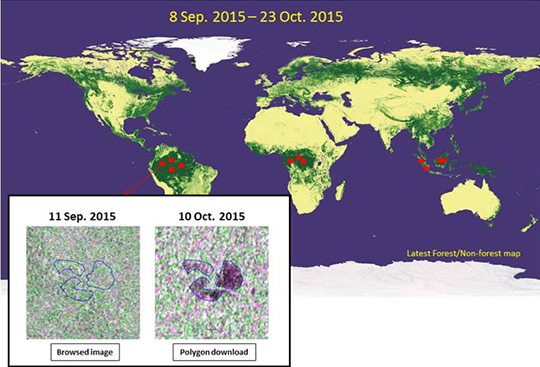 An example of how the data will be provided on the JAXA website * Polygon shapes outline areas where forest loss has been detected. The data will be provided about every six weeks in images with a resolution of 50 meters showing reduced forest cover. |
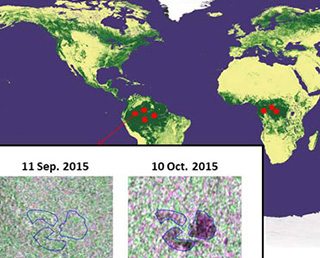 |
|---|
Nov. 26, 2015 Updated
International Advisory Board Workshop “Assessing the Impact of Satellite Earth Observation on Society and Policy”
|
JAXA organised an International Advisory Board on 9-10 November 2015 in Tokyo jointly with the National Institute of Information and Communications Technologies (NICT), Keio University, Institute for Global Environmental Strategies (IGES), in support of the project funded by Japan Science and Technology Agency (JST), with the goal of “Assessing the Impact of Satellite Earth Observation on Society and Policy”. A series of discussions invited perspectives from experts to understand how Earth observations contribute to environmental and other policy-making, and how space agencies establish links between their programmes, scientific advance, industrial innovation, and societal well-being. The Advisory Board concluded with some *key findings* from the two days of meetings. 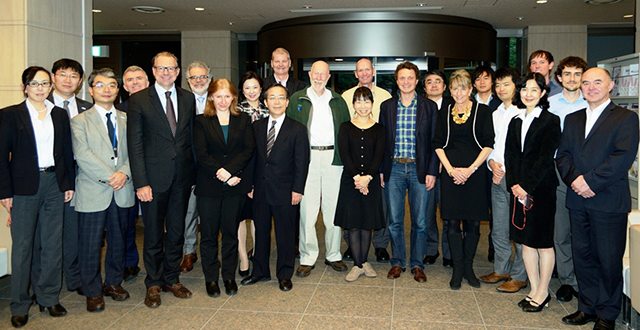 |
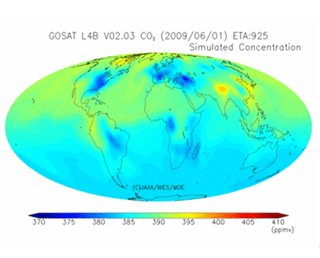 |
|---|
Oct. 5, 2015 Updated
Revision of the Mutual Cooperation Agreement between JAXA and CNES
|
Dr. Naoki Okumura, President of the Japan Aerospace Exploration Agency (hereinafter referred to as JAXA), and Dr. Jean-Yves Le Gall, President of the Centre National d’Etudes Spatiales (hereinafter referred to as CNES), signed the revised agreement for the “Inter-Agency Arrangement between NASDA and CNES Concerning the Preparation of a Long Term Cooperation in the Field of Space Programs ” on 5 October 2015. The purpose of the revision is to achieve effective cooperation between space agencies of Japan and France, in light of the changes in the business environment., This includes the increasing presence of emerging countries and the private sector in space development and utilization, as well as changes in Japan such as the enactment of the new Basic Plan for Space Policy and the transition of JAXA to a National Research and Development Agency. On the occasion of the visit by Mr. Manuel Valls, Prime Minister of France to Japan, the exchange ceremony of signing agreement took place at the Prime Minister’s Office of Japan in the presence of Prime Ministers Shinzo Abe and Manuel Valls. |
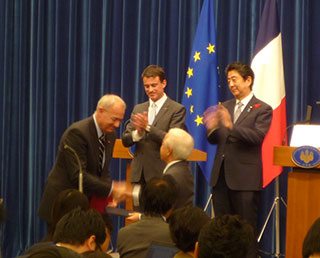 |
|---|
Sep. 8, 2015 Updated
Collaboration between JAXA and UNOOSA to Offer Small Satellite Deployment Opportunity from Kibo
|
JAXA and the United Nations Office for Outer Space Affairs (UNOOSA) agreed to cooperate in providing opportunities to deploy cube satellites (CubeSats) from the Japanese Experiment Module “Kibo” of the International Space Station (ISS). The Kibo is equipped with a special airlock system and robotic arm; hence a small satellite can be released to space from it by utilizing the Kibo’s distinct functions. Satellite deployment capability is the Kibo’s unique feature on the ISS. Small satellites can be manufactured at low cost and by utilizing relatively simple technology; therefore that can be useful for education, communication, disaster mitigation, and human resource development. With the agreement for collaboration this time, we can provide an opportunity for using space and verifying technology there to countries that do not possess the capacity to launch satellites. While taking maximum advantage of the Kibo’s strong points and employing the network and know-how with UN member countries, JAXA will offer opportunities of small satellite utilization from the Kibo to developing countries so that we continue to contribute to the improvement of their space technology. |
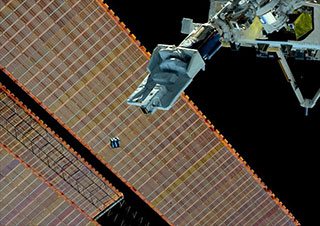 |
|---|
Mar. 19, 2015 Updated
JAXA, NIES, MOE and NASA signed a Memorandum of Understanding for cooperation on GOSAT, OCO-2 and GOSAT-2 missions
|
The Ministry of the Environment (MOE), the Japan Aerospace Exploration Agency (JAXA), the National Institute for Environmental Studies (NIES), and the National Aeronautics and Space Administration (NASA) have come to an understanding regarding cooperation on the Greenhouse Gases Observation Satellite (GOSAT), the Greenhouse Gases Observing Satellite-2 (GOSAT-2) and the Orbiting Carbon Observatory-2 (OCO-2) missions. H.E. Mr. Mochizuki, Minister of the Environment, Dr. Okumura, President of JAXA, Dr. Sumi, President of NIES and Mr. Bolden, Administrator of NASA, signed a Memorandum of Understanding on March 17, 2015, in Tokyo. GOSAT, its successor GOSAT-2, and OCO-2 are satellite missions that observe the concentration and distribution of greenhouse gases in the Earth’s atmosphere from outer space for the purpose of studying climate change. In addition, GOSAT/GOSAT-2 contribute to the international effort toward the prevention of warming, including monitoring greenhouse gas absorption and emissions. The calibration and validation of space-based greenhouse gas data among different satellite missions has been limited. Cooperation under this MOU will enable the Parties to improve the quality of satellite data through calibration campaigns and the effective use of ground-based observation data. Under the MOU, the Parties will cross-calibrate instruments on the 3 CO2 missions, implement common validation, participate in joint mission science teams, and conduct joint presentations in international conferences. [Photo: Signing of the MOU |
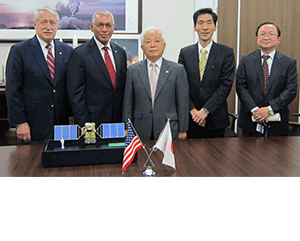 |
|---|
Dec. 25, 2014 Updated
APRSAF-21 successfully held in Tokyo
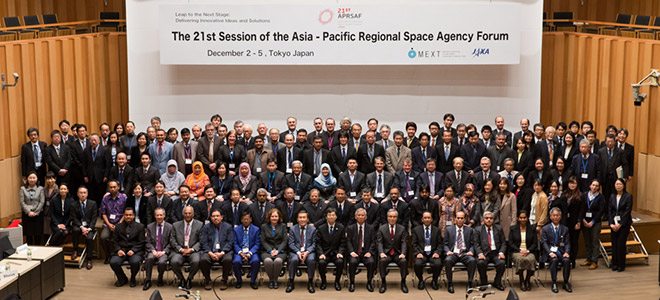
First Day of APRSAF-21 Plenary Session (December 4, 2014 at the Tokyo International Exchange Center (Plaza Heisei))
|
The 21st session of the Asia-Pacific Regional Space Agency Forum (APRSAF-21) was successfully held from December 2 to 5, 2014 at the National Museum of Emerging Science and Innovation (Miraikan) and the Tokyo International Exchange Center (Plaza Heisei), jointly organized by the Ministry of Education, Culture, Sports, Science and Technology of Japan (MEXT) and the Japan Aerospace Exploration Agency (JAXA). APRSAF, established in 1993, is the largest international forum in the Asia-Pacific region, annually organized by MEXT, JAXA and local host organizations. It was the first time in nine years since APRSAF had been held in Japan last time. Reaching a record high of 580 participants from 33 countries/regions and 12 international organizations, participants actively discussed under the main theme titled “Leap to the Next Stage: Delivering Innovative Ideas and Solutions” to promote further regional cooperation. Based on the Recommendations agreed in APRSAF-20 last year, newly-structured four working group sessions (Space Applications, Space Technology, Space Environment Utilization, and Space Education) were held in parallel in the first two days of APRSAF-21. Participants of the working groups confirmed the status of regional cooperative projects and discussed future activities in the areas of disaster management, environmental issues, utilization of the International Space Station (ISS), education and capacity building, etc. At the plenary session in the latter two days, activity reports were made by representatives from space agencies and related ministries in the region and international organizations. The special session titled “Societal Needs and Space for Practical Applications” was organized with the participation of space agencies, local implementation organizations and development aid agencies. Another special session titled “ISS and Beyond – Toward Global Space Exploration,” moderated by Mr. Soichi Noguchi, Japanese Astronaut and President of the Association of Space Explorers, also took place for sharing significance and prospect of human space activities, and then special presentations on international space exploration were delivered. Furthermore, the Asia-Pacific Space Leaders Meeting (AP-SLM) session was held in the afternoon of December 4 with the participation of high-level officers from space agencies and related ministries in the region and announced the Joint Statement for promoting further regional cooperation. During the week, there were also relevant events in conjunction with APRSAF-21 such as workshops of international projects (“Initiatives”) created through APRSAF (SAFE and Kibo-ABC), educational activities for the young generation (a water rocket event and a poster contest), and an exhibition. It was announced that the next session, APRSAF-22, will be hosted by National Institute of Aeronautics and Space of Indonesia (LAPAN), MEXT and JAXA and will take place in Denpasar, Indonesia. [Photo right: Announcement of the Joint Statement “Toward the Advancement of Activities in Exploration and Utilization of Outer Space for a Better Future of People on Earth” by the Asia-Pacific Space Leaders (5PM, December 4, 2014)] |
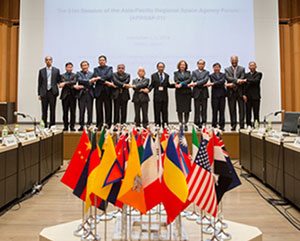 |
|---|
Nov. 28, 2014 Updated
JAXA and NASA signed a Memorandum of Understanding for cooperation on the Hayabusa2 mission and OSIRIS-REx mission -Strengthen Relationships in Asteroid Exploration-
|
The Japan Aerospace Exploration Agency (JAXA) and the National Aeronautics and Space Administration (NASA) came to an understanding regarding a Hayabusa2-OSIRIS-REx (Origins-Spectral Interpretation-Resource Identification-Security-Regolith EXplorer) mission agreement and Dr. Okumura, President of JAXA and Mr. Bolden, Administrator of NASA signed the Memorandum of Understanding on November 17, 2014 at the JAXA Tokyo Office. Asteroid explorer “Hayabusa2” will detect clues regarding the mystery of the origin and evolution of the Earth, sea and life by conducting sample return from a carbonaceous asteroid (C-type), which is more primitive than the asteroid Itokawa (S-type) explored by asteroid explorer “Hayabusa”. Furthermore “Hayabusa2” will lead the world by developing and maturing the deep space round-trip exploration technology that was demonstrated by “Hayabusa”, through new technological challenges such as creating an artificial crater on the asteroid. Similar to JAXA-NASA cooperation on the original Hayabusa mission, NASA provides support for Hayabusa2 including the NASA Deep Space Network which enables advanced and reliable mission operations. In addition, through scientific cooperation, asteroid sample exchange and joint participation during key mission phases with NASA’ s asteroid explorer OSIRIS-REx, JAXA and NASA will mutually maximize their missions’ results. OSIRIS-REx is scheduled to be launched in 2016, and its primary objective is also sample return from a carbonaceous asteroid. Memorandum Signature Ceremony |
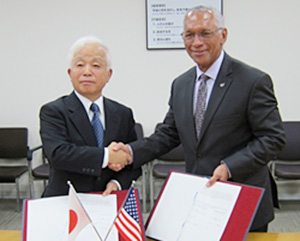 |
|---|
Nov. 7, 2014 Updated
JAXA Vice President Shizuo Yamamoto assumed the post of Chairman of the CEOS.
|
On Oct. 30, JAXA Vice President Shizuo Yamamoto assumed the post of Chairman of the Committee of Earth Observation Satellites (CEOS.) The CEOS was established in 1984 to internationally coordinate activities of Earth observation missions from space. It is the only organization that specializes in Earth observation satellites in the world. For the last 30 years, the CEOS has been organizing Earth observation satellite missions planned by each country to facilitate collaboration with data users by promoting data sharing and problem solving for social issues by using acquired data. The year 2015 will be important to plan future Earth observations while JAXA plays the important role of the chairmanship of the CEOS. In this coming March, the United Nations World Conference on Disaster Reduction is scheduled to establish the international disaster preparation framework action plan, the post-Hyogo framework, for the next 10 years. The Group of Earth Observations will also decide the Earth observation strategic plan for the next 10 years within 2015. In the last 30 years, observation methods have been improving and diversifying thanks to technological developments; therefore, we are in an era of using space to solve social issues that Earth observation technologies face. For that, Earth observation satellites are expected to contribute to solving various issues for human beings with many projects and missions around the world through GEOS. JAXA assumes the CEOS chairmanship for a year until November 2015, and will promote the important role played by Earth observation satellites while aiming at making contributions to various activities in the next 10 years. [Photo: The passing of the chairmanship at the 28th CEOS (EUMETSAT Director General Alain Ratier, former chairman, hands over the chairman hammer to JAXA Vice President Shizuo Yamamoto.)] |
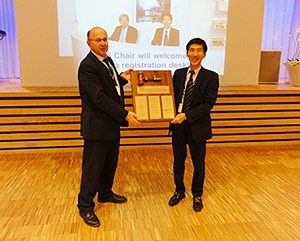 |
|---|
Oct. 20, 2014 Updated
Party led by Deputy Prime Minister Phuc of Vietnam visited TKSC on Oct. 10
|
A party led by Mr. Nguyen Xuan Phuc, Deputy Prime Minister of the Socialist Republic of Vietnam, visited the Tsukuba Space Center on October 10, 2014. JAXA President Naoki Okumura welcomed the party of 42 consisting of seven minister-level members including Prof. Dr. Chau Van Minh of the Vietnam Academy of Science and Technology (VAST) and media people from Vietnam. In conjunction with this visit, JAXA-VAST collaboration results were confirmed and a Joint Statement of Intent for Enhancing Partnership between VAST and JAXA was signed in the presence of Deputy Prime Minister Phuc. Pertinent agencies in Vietnam and JAXA are jointly working for various projects such as co-hosting the Asia-Pacific Regional Space Agency Forum (APRSAF), use of satellite data, development of a small satellite and its release from the Kibo on the International Space Station, and human resourse development. International cooperation is indispensable in many areas of aerospace activities. JAXA hopes to contribute to promoting space technology development and utilization and construction of good relations between Japan and those countries in facilitating effective cooperation with pertinent agencies in each country. [Photo: From left: Mr. Nguyen Xuan Phuc, Deputy Prime Minister of the Socialist Republic of Vietnam, Dr. Chau Van Minh of the Vietnam Academy of Science and Technology (VAST), JAXA President Naoki Okumura] 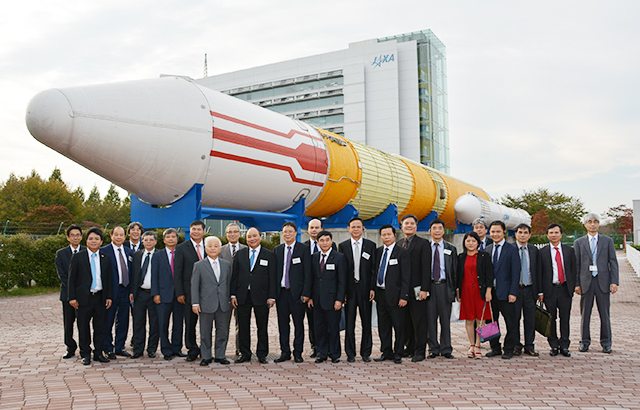 Tsukuba Space Center at the H-IIA Launch Vehicle before |
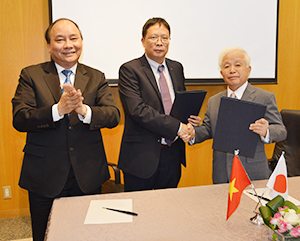 |
|---|
Sep. 9, 2014 Updated
Mr. Elon Musk, CEO/CTO of Space Exploration Technologies (SpaceX) Visited JAXA
|
Dr. Naoki Okumura, President of JAXA received a courtesy call from Mr. Elon Musk, CEO/CTO of Space Exploration Technologies (SpaceX), September 9, 2014 during his visit to Japan. They exchanged their views on current technical challenges, future space development including space transportation systems, space market. And also they exchanged their management vision. Both JAXA and SpaceX agreed on continuing their efforts to strengthen their contribution for space development. [Photo: JAXA President Okumura (Left), SpaceX CEO, Mr. Musk (Right)] |
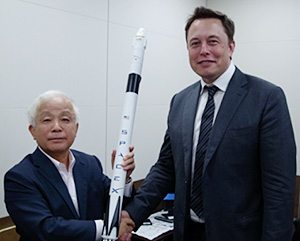 |
|---|
May 22, 2014 Updated
JAXA co-hosted the First JAXA-NSC Polar Workshop in Tokyo
|
JAXA and Norway Space Centre (NSC) hosted the First JAXA-NSC Polar Workshop on Friday, March 28, 2014 at the Royal Norwegian Embassy in Tokyo. This workshop was held under the JAXA-NSC agreement for cooperation in the civil uses of outer space. The experts from NSC, JAXA, and the organizations related to polar researches attended the workshop and discussed issues involving polar researches and space. The workshop helped to advance participants’ mutual understanding. Japan and Norway have a long history of cooperation. Japanese sounding rockets have been launched from Andøya Rocket Range and Svalbard in Norway; and the data from JAXA’s Earth Observation satellites, including Shizuku (GCOM-W1) and Ibuki (GOSAT), has been received at the Svalbard station. The issues in the arctic region – environmental management, energy and resources, fishing resources, Northern Sea routes, etc. – have become internationally critical. Eight countries in the Arctic region including Norway established the Arctic Council in 1996 to discuss common issues. The importance of the Arctic Region to Japan has also been rising and last year Japan became one of the observers of the Arctic Council, contributing through participation to working groups and other occasions. NSC and JAXA both recognizes the importance of NSC-JAXA bilateral cooperation for Earth Observation and polar researches. At the workshop, among various topics, potential cooperation projects such as observation of sea ice in the Northern Sea and comparison of radar data from European and Japanese satellites were suggested. NSC and JAXA agreed to continue the dialogue and to hold the 2nd Polar Workshop in early 2015 in Norway. [Photo: at Arctic Hall, Royal Norwegian Embassy, Tokyo] 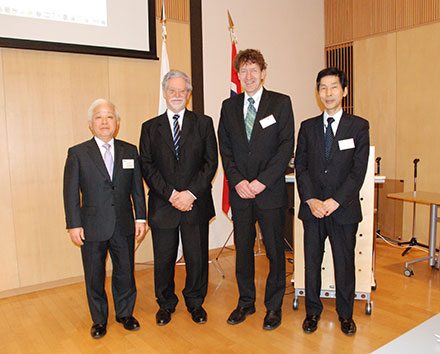 From left: JAXA President Okumura, Norwegian Ambassador Walther, NSC General Director Andersen, JAXA Vice President Yamamoto 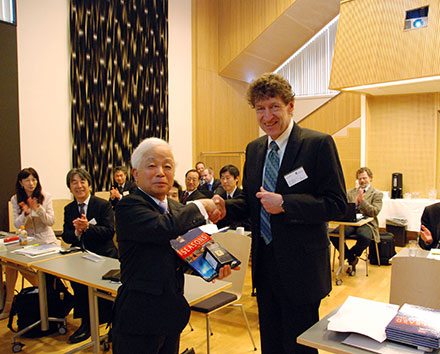 JAXA President Okumura and NSC General Director Andersen |
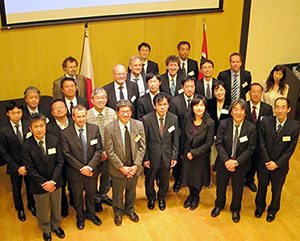 |
|---|
Apr. 23, 2014 Updated
Signing of Partnership Agreement between JAXA and JICA
|
Today, the Japan International Cooperation Agency (JICA) and the Japan Aerospace Exploration Agency (JAXA) signed a partnership agreement. The objective of the agreement is to promote collaboration between two institutions to contribute to solving various development challenges that developing countries are facing. The two institutions will also work on global issues using aerospace technology by further strengthening ties and exhibiting combined abilities to utilizing respective unique features and human resources. JICA President Akihiko Tanaka and JAXA President Naoki Okumura signed the agreement at a signing ceremony held in JAXA Tokyo Office. At the signing ceremony, referring to the plan that the Advanced Land Observing Satellite-2 “DAICHI-2” (ALOS-2) will be launched on May 24th, 2014, Okumura said “JAXA will be able to provide more accurate topography data, which can be utilized in various sectors such as flood disaster prevention.” Tanaka showed his expectation by adding that “Utilization of satellite information for ASEAN disaster management and protection of forests and preventing illegal deforestation of the Amazon are the best examples that aerospace technology provides effective solutions to development challenges. JAXA’s cutting edge technology becomes a comparative advantage of Japanese development cooperation, enabling JICA to work more effectively.” With this partnership agreement in place, collaboration between JICA and JAXA is expected to strengthen, and higher quality cooperation will be implemented in developing countries utilizing aerospace technologies. |
 |
|---|
Feb. 6, 2014 Updated
20th APRSAF co-hosted by Japan and Vietnam
|
The 20th session of the Asia-Pacific Regional Space Agency Forum (APRSAF-20), under the main theme entitled “Values From Space: 20 years of Asia-Pacific Experiences,” successfully concluded its four-day program on Friday, December 6, 2013, at Melia Hanoi Hotel, in Hanoi, Vietnam. APRSAF-20 was jointly organized by the Vietnam Academy of Science and Technology (VAST), the Ministry of Education, Culture, Sports, Science and Technology of Japan (MEXT), and the Japan Aerospace Exploration Agency (JAXA). Approximately 420 participants from 28 countries and 8 international organizations attended the session. |
Nov. 25, 2013 Updated
20th APRSAF to be held in Vietnam from Dec. 3
|
The 20th Session of the Asia-Pacific Regional Space Agency Forum (APRSAF-20) will be held in Hanoi, Vietnam, between Dec. 3 (Tue.) to 6 (Fri.), 2013, hosted by Japan (Ministry of Education, Culture, Sports, Science and Technology and JAXA) and Vietnam (Vietnam Academy of Science and Technology, VAST). Space-related organizations, government agencies, space application organizations, researchers and people from universities in the Asia and Pacific region will get together for this forum to actively engage in discussions along with this year’s theme “Value from Space: 20 years of Asia-Pacific Experiences.” The forum consists of the plenary session and four working group sessions (for Earth Observation, Communication satellite Applications, Space Environment Utilization, and Space Education and Awareness.) Working group sessions will take place for the first two days, and the latter two days will be allocated for the plenary session for activity/initiative reports of participating organizations/agencies. The APRSAF, celebrating its 20th anniversary, will also hold various extra special sessions for promoting further cooperation in the space field in the Asia-Pacific region such as a special session aimed at finding new cooperation, a special guest lecture, and a special session by heads of space organizations of Asian countries including JAXA President Okumura. As of Nov. 22, some 420 people have already registered for participation from seven international organizations from 32 countries and regions mainly from the Asia-Pacific region. |
 |
|---|
Jun. 19, 2013 Updated
JAXA and ESA sign Amendment to the agreement concerning cooperation in the field of space parts
|
JAXA and the European Space Agency (hereinafter referred to as ESA) have extended the Agreement concerning cooperation in the field of space parts and amended the Agreement by adding a field of materials in order to promote the cooperation relationship in the field of space parts and materials between JAXA and ESA. The agreement was signed on June 18, 2013. On June 19, 2007, JAXA and ESA have entered into an Agreement concerning cooperation in the field of space parts for a period of six years with the purpose of exchanging information regarding the procurement of space parts between Japan and Europe and promoting the usage of each other’s parts. We have been working toward this goal trying to avoid the overlapping of the part development by exchanging personnel, and exchanging information regarding the test/inspection requirements for space parts in order to promote mutual understanding in the field of space parts between Japan and Europe. From this, we achieved steady results; Japanese space parts began to be used in Europe and European space parts are now considered to be used in Japan. With this achievement, we agreed to sign the extended Agreement on the cooperation in the space parts field. We also agreed on including the field of material in addition to the field of space parts. With this Agreement signed, we hope to contribute to the advance of space activities in both Japan and Europe by promoting various efforts in cooperation such as mutual evaluation and use, and joint research and development of space parts. |
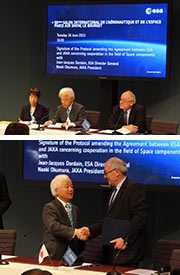 |
|---|
Jan. 27, 2013 Updated
JAXA held 19 th APRSAF
*Click for Large Image
The nineteenth session of the Asia-Pacific Regional Space Agency Forum (APRSAF-19), under the main theme entitled “Enriching the quality of life through innovative space programs,” successfully concluded its 4-day program on Friday, December 14, 2012, at the Berjaya Times Square Hotel Malaysia, in Kuala Lumpur, Malaysia. APRSAF-19 was jointly organized by the Ministry of Science, Technology and Innovation of Malaysia (MOSTI), the National Space Agency of Malaysia (ANGKASA), the Ministry of Education, Culture, Sports, Science and Technology of Japan (MEXT), and the Japan Aerospace Exploration Agency (JAXA). Approximately 380 participants from 33 countries and 14 international organizations attended the session.
APRSAF-19, as was the case in the past, consisted of four working group (EO WG, CSA WG, SEA WG, and SEU WG) sessions that were held in parallel and the plenary. There were also relevant events in conjunctions with APRSAF-19 such as the water rocket event, Colloquium on Astronomy from ISS Kibo, SAFE workshop, Kibo-ABC workshop, Poster Contest, and APRSAF-19 exhibition.
At the plenary session on Day 3, on December 13, opening remarks were made by the general co-chairs, Dr. Mustafa Din Subari, Director General, ANGKASA, Malaysia and Dr. Satoru Otake, Deputy Director General, Research and Development Bureau, MEXT, Japan, and Keynote addresses were delivered by Mr. Yoshinari Akeno, Deputy Director-General, Office of National Space Policy, Cabinet Office, Japan and Prof. Datin Paduka Dr. Khatijah Bt. Mohd. Yusoff, Deputy Secretary General (Science), MOSTI, Malaysia. In the afternoon, a special session entitled “Enriching the quality of life through innovative space programs” was held with the participation as speakers of representatives of space agencies, such as ISRO/India, LAPAN/Indonesia, JAXA/Japan, KAZCOSMOS/Kazakhstan, GISTDA/Thailand and VAST/Vietnam. The session was chaired by Dr. Mustafai, Director General, ANGKASA.
It was announced at the last plenary session, on December 14, that the next session, APRSAF-20, would be hosted by the Vietnam Academy of Science and Technology (VAST) and would take place in Hanoi, Vietnam.
Jun. 6, 2012 Updated
Dr. Yasushi Horikawa, JAXA’s Technical Counselor, appointed as the Chair of the United Nations Committee on the Peaceful Uses of Outer Space (COPUOS)
|
The Japan Aerospace Exploration Agency (JAXA) would like to announce that on June 6th, on the outset of the fifty-fifth session of the Committee on the Peaceful Uses of Outer Space (COPUOS), Dr. Yasushi Horikawa, JAXA’s Technical Counselor, became its first Japanese Chair. He will chair the 55th and 56th sessions of COPUOS. COPUOS was established as a permanent Committee of the United Nations in 1959, to review the scope of international cooperation in the peaceful uses of outer space, to devise programmes in this field to be undertaken under United Nations auspices, to encourage continued research and development and the dissemination of information on outer space matters, and to study legal problems arising from the exploration of outer space. There are two Subcommittees of COPUOS, namely the Science and Technical Subcommittee and the Legal Subcommittee, and each of these bodies meets. once a year in Vienna. Consisting of 71 members, COPUOS has been working in the recent years, on developing guidelines for ensuring the long-term sustainability of outer space activities. As space activities have become increasingly diversified and dynamic in many countries, involving the participation from the private sector, COPUOS is expected to play an increasingly important role in promoting international cooperation in space science and technology areas, as well as legal areas. Dr. Horikawa’s assumption of the chairmanship of UN COPUOS is considered as part of Japanese contributions to the UN, by making its experts available to support the work of the UN in space activities, and it reflects JAXA’s readiness to actively participate in and contribute to the work of COPUOS. [Reference] |
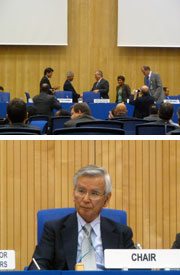 |
|---|
Dec. 26, 2011 Updated
JAXA held 18th APRSAF
*Click for Large Image
The eighteenth session of the Asia-Pacific Regional Space Agency Forum (APRSAF-18), under the main theme entitled “A regional collaboration for tomorrow’s environment”, successfully concluded its 4-day program on Friday, December 9, 2011, at Marina Mandarin Singapore. APRSAF-18 was jointly organized by the Singapore Space and Technology Association (SSTA), the Centre for Remote Imaging, Sensing and Processing, National University of Singapore (CRISP), the Ministry of Education, Culture, Sports, Science and Technology of Japan (MEXT), and the Japan Aerospace Exploration Agency (JAXA). Approximately 280 participants from 28 countries and region and 11 international organizations attended the session.
APRSAF-18, as was the case in the past, consisted of four working group (Earth Observation WG, Communication Satellite Applications WG, Space Education and Awareness WG, and Space Environment Utilization WG) sessions that were held in parallel and the plenary. There were also relevant events in conjunction with APRSAF-18 such as the water rocket event, SAFE workshop, poster contest, and the special astronaut event entitled “Asians in Space: Achievements of Human Spaceflight in Asian Countries”.
At the plenary session on Day3, on 8 December, opening remarks were made by Mr. Joseph Hui, Deputy Chief Executive, Technology & Corporate Development, National Environment Agency, Singapore, and keynote addresses were delivered by the representatives of the countries that co-organized APRSAF-18, namely, Dr. Tetsuhiko Ikegami, Chairman, Space Activities Commission (SAC), the Ministry of Education, Culture, Sports, Science and Technology (MEXT), Japan and Mr. Tan Choo Shian, Deputy Managing Director, Economic Development Board (EDB), Singapore.
At a country report session, Dr. Keiji Tachikawa, President, JAXA made a presentation and introduced Japan’s climate change studies and adaptations. He also spoke about the utilization of KIBO (Japanese experimental module for International Space Station) and QZSS-1 (Quazi-Zenith Satellite System).
It was announced at the last plenary session, on 9 December, that the next Session, APRSAF-19, would be hosted by ANGKASA (Malaysia) and take place in Kuala Lumpur, Malaysia from December 11 to 14, 2012.
Oct. 28, 2011 Updated
62nd International Astronautical Congress
|
The 62nd International Astronautical Congress (IAC) was held for five days between October 3 and 7, in Cape Town, South Africa. The IAC is annuallly held in autumn cosponsored by International Astronautical Federation (IAF), International Academy of Astronautics (IAA), and International Instutite of Science of Space Law (IISL). It is the world’s largest space-related conference both nominally and practically attended by the agency heads and senior exectives of the world’s space agencies along with industry and academics. It is a first IAC held in the African continent under the theme of “African Astronaissance”, and about 3,000 space-related people from all over the world participated in the event. |
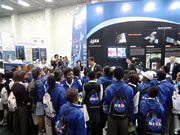 |
|---|
May 2, 2011 Updated
Workshop on GIS and Space Technology for Sustainable Development of Asia
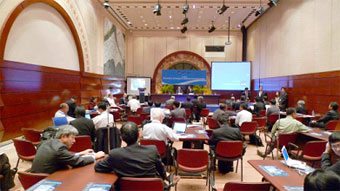
The Workshop on GIS and Space Technology for Sustainable Development of Asia was held in Manila, Philippines, between February 21 and 22, 2011.
The Workshop aimed to help countries to share knowledge on appropriate geographical information system (GIS) and space technologies for their various development sectors by identifying users’ problems in each country, match-make between demand and supply of available technologies, and create a national roadmap for their use and development towards sustainable development. Its focus sectors include disaster management, survey, urban development, agriculture, environment, forest, transport and infrastructure.
Thoughts and cases on GIS and space technology were presented to brainstorm on new ideas for utilization, research, and development. Technical, legal, administrative and standardizing barriers in developing and introducing the space-technology-based system were discussed and ways to increase national support to GIS and space technologies were explored.
A chair’s summary was produced to encourage and help all users and developers of the technologies in pursuing actions in their home countries. Participants’ input on specific requirement of technologies, (e.g. accuracy of satellite data,) will be reflected in satellite development program of space agencies, e.g. Japan Aerospace Exploration Agency (JAXA). Results of the workshop should lead to project formulation by ADB and other bilateral and multilateral financing institutions in partnership with countries in the region.
Dec. 7, 2010 Updated
JAXA held 17th APRSAF
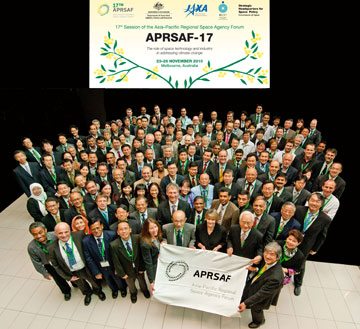
JAXA co-hosted the seventeenth session of the Asia-Pacific Regional Space Agency Forum (APRSAF-17) in Melbourne, Australia, between November 23 and 26, 2010. Approximately 230 delegates from 23 countries and region and 11 international organizations were in attendance. The following are the major achievements of APRSAF-17.
1.Disaster Management Support System in the Asia-Pacific Region (Sentinel-Asia Project)
We confirmed a smooth operation including: the increase of available satellites through the new STEP-2 system; coordination of the data analysis system; improvement of data transmission thanks to setting a ground station of the Wideband InterNetworking engineering test and Demonstration Satellite “KIZUNA” (WINDS); and the start of cooperation with the International Disaster Charter.
2.Space Applications for Environment (SAFE)
It was reported that eight verification and research initiatives (prototypings) are in progress including four new initiatives (prototypings,) namely fishery forecasts in Sri Lanka, water resource management in Pakistan, fishing ground management in Thailand and mangrove monitoring in Vietnam.
3.Cooperation for coping with climate change in the Asia-Pacific region
The theme this time was “the role of space technology and industry in addressing climate change,” and a panel discussion was held focusing on climate change. During the discussion, the following were reported: an activity report on the Global Climate Observation System (GCOS); prioritized challenges including water, forest, urban and transportation issues by the Asian Development Bank and the United Nations; report of a forest carbon accounting system from Indonesia; and introduction of JAXA’s activities for climate change observations and examples of satellite data applications. As a result, we reconfirmed the importance of continuing observations and information exchange, collaboration of space and ground technologies, and the APRSAF’s role for coordination. In addition, Australia proposed a new initiative called the “Climate Change Regional Readiness Review for key climate missions (Climate R3)” through which the needs of climate change information in the Asia-Pacific region can be grasped. With this initiative, Australia will cooperate with organizations that share the same interests to study the scope of research and implementation method, engage in pilot phase activities for a year, and report its achievements at the next annual meeting.
4.Development of talent in the Asia-Pacific region
We listened to a report about a new enterprise called “UNIFORM” (University International Formation Mission, micro satellite research and development by the alliance of Japanese universities) proposed by the Ministry of Education Culture Sports Science and Technology of Japan. Within the framework of the APRSAF, the Satellite Technology for the Asia-Pacific Region (STAR) program began in June 2009 for member countries to cooperate in satellite development in order to nurture talents in the region. We recognized that STAR program participants would join UNIFORM’s OJT to realize micro-satellites early.
5.Application promotion of the Japanese Experiment Module “Kibo” of the International Space Station in the Asia-Pacific region
To optimize use of the Kibo in the region, JAXA introduced activities using Kibo and HTV (a cargo transporter to the ISS) including a plant seed shipment/retrieval mission, proposal and promotion of Kibo/HTV collaborative use, and implementation of some educational programs at the ISS. JAXA called for active participation of member countries and region in such JAXA projects.
6.Facilitating the use of the quasi-zenith satellite in the Asia-Pacific region
JAXA launched the first quasi-zenith satellite “MICHIBIKI” in September 2010. The Asia-Pacific region is ahead of other regions in realizing an environment where the positioning system using a multiple number of satellites can become available. Along with the APRSAF-17, the second Asia Oceania Regional Workshop on GNSS (Global Navigation Satellite System) was held at the Royal Melbourne Institute of Technology on November 21 and 22. At the workshop, a new framework was established for a feasibility study on the use and joint research of the positioning system with multiple satellites including cooperative study for the use of the MICHIBIKI. Participants in the workshop were asked to join the multi-GNSS verification campaign.
7.Further space education promotion
We had a meaningful discussion on various issues including the further promotion and sharing of educational material development, next-step activities such as a sophisticated plastic rocket launch competition, and practical application of external funds. Also, it was reported that Bangladesh would hold a space education seminar, and Thailand was also scheduled to have a satellite data educational workshop in 2011. As side events, we held a water rocket competition and a poster contest, and successfully stirred interest in space education among youths.
Nov. 22, 2010 Updated
APRSAF-17 is being held in Australia from Nov. 23 to 26
|
The 17th Asia-Pacific Regional Space Agency Forum (APRSAF-17) has been held in Melbourne, Australia, between November 23 and 26. The APRSAF is the largest space-related conference in the Asia-Pacific region. The APRSAF-17 this time is co-hosted with Japan (Ministry of Education, Culture, Sports, Science and Technology, and JAXA) and Australia (Department of Innovation, Industry, Science and Research) . |
 |
|---|
Nov. 8, 2010 Updated
JAXA and INPE Signing Letter of Intention in cooperation for REDD+ using DAICHI
|
JAXA and the Instituto Nacional de Pesquisas Espaciai (INPE), a Brazilian national space research institute, signed a Letter of Intention (LOI) to cooperate in the program on Reducing Emissions from Deforestation and Forest Degradation in Developing Countries (REDD+) using the JAXA’s Advanced Land Observing Satellite “DAICHI.” |
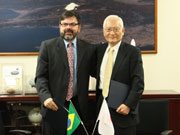 |
|---|
Oct. 18, 2010 Updated
Agreement on wetland survey by DAICHI with Ramsar Convention Secretariat
|
On October 18, JAXA and the Ramsar Convention Secretariat participated in the 10th Conference of the Parties (COP 10) to the Convention on Biological Diversity entitled “The role of the Ramsar Convention in the implementation of the Convention on Biological Diversity,” and agreed to cooperate in a global survey of the Wetlands of International Importance through the use of the Advanced Land Observing Satellite “DAICHI.” We have since signed the cooperation agreement. |
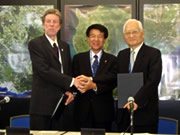 |
|---|
Sep. 30, 2010 Updated
Inter-agency Cooperation Agreement with Italian, Norwegian, and French Space Agencies
JAXA signed an inter-agency cooperation agreement with the Italian space agency, Agency Spaziale Italiana (ASI), the Norwegian Space Center (NSC) and the French space agency, Centre National d’Etudes Spatial (CNES), respectively.
|
1. Agency Spaziale Italiana (ASI): Agreement outline
|
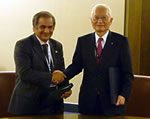 |
|---|
|
2. Norwegian Space Center (NSC): Agreement outline
|
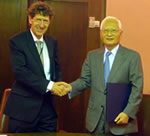 |
|---|
|
3. Centre National d’Etudes Spatial (CNES): Agreement outline
|
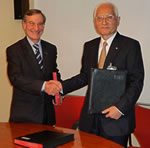 |
|---|
Jul. 21, 2010 Updated
Signing a Letter of Intent (LOI) with Asia Development Bank (ADB)
|
The JAXA and the Asian Development Bank (ADB) agreed to cooperate in promoting the application of satellite technology to disaster management, climate change mitigation and adaptation, forest monitoring, and water resource management. |
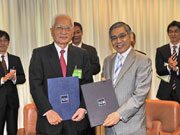 |
|---|
May 26, 2010 Updated
Vietnam’s Deputy Prime Minister Nhan visits TKSC
On May 19, Vietnam’s Deputy Prime Minister Nguyen Thien Nhan visited and toured around the Tsukuba Space Center (TKSC.)
President Tachikawa of JAXA showed him the life-size models of Kibo, the Japanese Experiment Module of the International Space Station, and satellites, as well as training facilities for astronauts. The deputy prime minister also keenly listened to explanations presented by representatives of each project.
JAXA and Vietnam’s space agency hold a cooperative agreement, and are working together on small satellite technology.
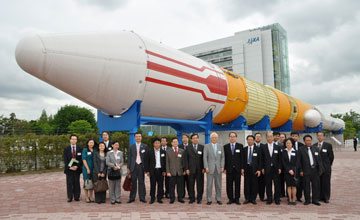
Apr. 13, 2010 Updated
Memorandum of Understanding between The Netherlands Space Office and JAXA
|
JAXA is pleased to announce that President Keiji Tachikawa of JAXA and Dr. Ger Nieuwpoort, the Director of The Netherlands Space Office (NSO), concluded a Memorandum of understanding between JAXA and NSO for cooperation in space for peaceful purposes at the Netherlands Embassy in Japan on April 12, 2010. With this Memorandum of Understanding (MOU), the two organizations will identify potential areas for mutual cooperation to promote our collaborative efforts. |
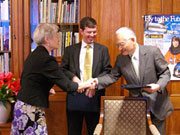 |
|---|
Feb. 17, 2010 Updated
JAXA held 16th APRSAF
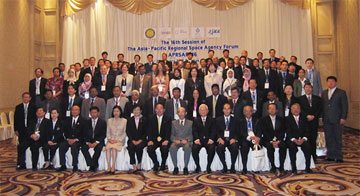
JAXA cosponsored the 16th Asia-Pacific Regional Space Agency Forum (APRSAF-16) in Bangkok, Thailand, between January 26 and 29, 2010. APRSAF-16 saw a gathering of 310 participants from 27 countries and region and 10 international organizations. The following are the major achievements of the forum.
1.Enhancing our efforts to understand and manage the real status of disaster-stricken areas using satellites (Sentinel Asia Project)
We will further promote work to build and begin operating a cooperative system between the Sentinel Asia Project and the International Disaster Charter. We decided to newly set up a working group on the Glacial Lake Outburst Flood Monitoring.
2.Starting projects to tackle environmental problems using satellites (SAFE Program)
Under this framework, we confirmed that we would work on six issues including two newly added projects namely in Indonesia (observing a potential drought) and Sri Lanka (risk of sea-level rise along coastal areas) .
3.Improving a human resource development project such as fostering more skilled satellite engineers (STAR Program)
This program started on a full scale in April 2009, and, at the APRSAF-16, it was reported that JAXA Sagamihara Campus has been accepting engineers dispatched from member organizations since June 2009.
4.Expanding the applicable area of the Space Environment Utilization
We decided to further promote the use of the space environment aiming at activating cooperation using the Japanese Experiment Module “Kibo”.
5.Expanding the applicable area of the utilization of the Global Navigation Satellite Systems (GNSS)
We held a workshop on the Global Navigation Satellite Systems (GNSS) including the utilization methods of the Quasi-Zenith Satellite System (QZSS) in Bangkok between January 25 and 26, 2010. Based on our discussion results, we decided to strive for a new initiative for the use of multiple navigation satellites including utilization of the QZSS in the next APRSAF.
6.Promoting Space Education Awareness
Concerning space education, we decided to enhance the new efforts including activating educational outreach activities and strengthening collaborative initiatives with international organizations for further development and activation.
The next session, APRSAF-17 will be held in Australia in late November 2010.
The results of APRSAF-16 including the Recommendations adopted by all the participants are now posted here.
Feb. 16, 2010 Updated
Signing an agreement with Kazcosmos for the future cooperation
|
On January 27, 2010, President Tachikawa of JAXA and Chairman Musabayaev of the National Space Agency of the Republic of Kazakhstan (Kazcosmos) signed an agreement “Establishment of Cooperation in the Field of Space Activities for Peaceful Purposes” for the future cooperation between the two agencies in Bangkok, Thailand. We will proceed to the future cooperation in four specific areas namely space science, earth observation, satellite communication, and global satellite navigation. |
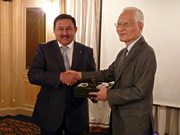 |
|---|
Jan. 21, 2010 Updated
The 16th APRSAF to be held in Bangkok
|
Japan (Ministry of Education, Culture, Sports, Science and Technology and JAXA) and Thailand (Ministry of Science and Technology and Geo-Informatics and Space Technology Development Agency, GISTDA) will jointly hold the 16th Asia-Pacific Regional Space Agency Forum (APRSAF-16) between January 26 and 29 in Bangkok, Thailand. This international forum is the largest of its kind for space agencies in the Asia-Pacific region. 1.the Sentinel Asia Project, a watchman for Asia to manage and control disaster prevention using earth surface images taken by satellites, 2.the SAFE (Space Applications for Environment) project, which also uses earth surface images for better land use plans to cope with environmental changes, and 3.the STAR (Satellite Technology for the Asia-Pacific Region) project, the human resource development program for satellite development. |
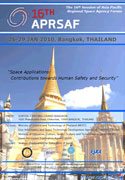 |
|---|
Nov. 10, 2009 Updated
Lecture & Panel Discussion Featuring New NASA Administrator Charles F. Bolden
|
The Japan Aerospace Exploration Agency (JAXA) will hold a lecture and panel discussion, “NASA-JAXA Cooperation: Into the Future,” from 10:00 a.m. on November 17 (Tuesday) at Takeda Hall, University of Tokyo. Newly-appointed NASA Administrator and former astronaut Charles F. Bolden will discuss U.S. space policy, NASA’s newest projects, and future plans. JAXA President Keiji Tachikawa, JAXA Astronaut Chiaki Mukai, and Professor Shinichi Nakasuka of the Department of Aeronautics and Astronautics at the School of Engineering, Graduate School of the University of Tokyo, will also join discussion on future directions for this important partnership. |
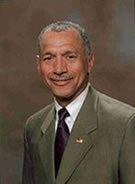 |
|---|
Oct. 28, 2009 Updated
60th International Astronautical Congress
JAXA booth received the “2009 BEST EXHIBITOR” award
|
The 60th International Astronautical Congress (IAC) was held for five days between October 12 and 16, 2009, at the Daejeon Convention Centre in Daejeon, which is known as a science and technology city in South Korea. The IAC is the world’s largest space-related conference both nominally and practically. South Korea became the fourth Asian country to host this big event following Japan, India, and China. Under this year’s theme of “Space for Sustainable Peace and Progress,” about 2,200 space-related people participated in the event. At the opening ceremony, South Korean President Lee Myung-bak gave a speech to show his country’s strong determination to actively engage in space development for peaceful purposes by further promoting mutual cooperation between countries in the area of space. At the Heads of Agency Plenary session on the first day of the congress, the heads of National Aeronautics and Space Administration (NASA), Canadian Space Agency (CAS), European Space Agency (ESA), Indian Space Research Organization (ISRO), Russian Federal Space Agency (FSA), Korea Aerospace Research Institute (KARI) and JAXA explained each organization’s overview on current and future programs, followed by active discussions coordinated by the moderator mainly on measures for climate change issues and moon exploration. JAXA participated in not only the Heads of Agency Plenary session, but also played an important role as a panelist and a moderator in other sessions and academic sessions and held discussions with space-related people from other countries. In the area of space education, JAXA was actively involved in holding educational events, dispatching 41 Japanese students to the IAC, and supporting participation in the 18th Manfred Lachs Space Law Moot Court Competition from the Asia-Pacific Region. Some 1,800 people visited the JAXA exhibition booth during the five days, and we received the “2009 BEST EXHIBITOR” award. |
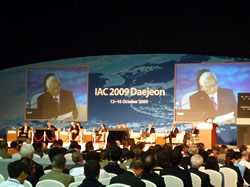 JAXA President Tachikawa at the Heads of Agency Plenary session. 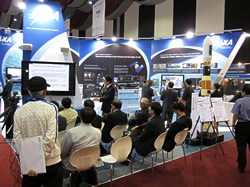 The JAXA booth at the Space Exhibition. |
|---|
Aug. 24, 2009 Updated
JAXA and DLR initiated R&D Cooperation in Satellite Disaster Monitoring
|
On the occasion of JAXA-DLR Strategy Dialogue in Tokyo, Dr. Keiji Tachikawa, President of Japan Aerospace Exploration Agency (JAXA), and Prof. Dr. –Ing. Johann-Dietrich Wörner, Chairman of the Executive Board of German Aerospace Center (DLR), signed today Letter of Intent (LOI) concerning Mutual cooperation for Satellite disaster monitoring In this LOI, both parties acknowledged the necessity to promote satellite application, especially Synthetic Aperture Radar (SAR) satellites, as well as related applied research, and to pursue such activities in an international manner. In addition, both parties confirmed the mutual intention of the following R&D cooperation, using on-orbit SAR satellites, ALOS and TerraSAR-X. |
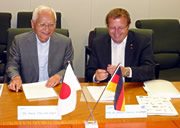 |
|---|
Jun. 11, 2009 Updated
Two former JAXA executive directors receive a letter of appreciation from NASA
On June 4, 2009, Mr. Yasushi Horikawa (former JAXA executive director in charge of satellites) and Mr. Kiyo Higuchi (former JAXA executive director in charge of international cooperation and planet probe missions) received a letter of appreciation from NASA at the Embassy of the United States for their great contributions to cooperative relations between JAXA and NASA. They received the letters from Mr. James P. Zumwalt, Charge d’Affaires of the U.S. Embassy, on behalf of the NASA international administrator.
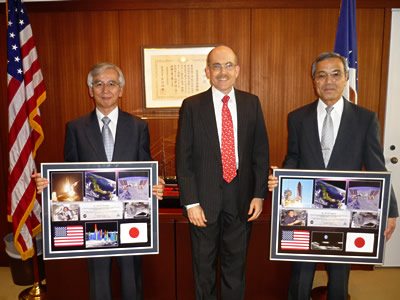
Photo: at the U.S. Embassy, left: Mr. Horikawa, center: Mr. Zumwalt, right: Mr. Higuchi
* Mr. Horikawa and Mr. Higuchi had been involved in the International Space Station (ISS) project since the 1980s, and greatly contributed to the development of the ISS Japanese Experiment Module and cooperative development of the ISS with the U.S. After leaving the ISS project, Mr. Horikawa became a JAXA executive director in charge of satellite development and utilization, and made remarkable contributions to global scale environmental issues in corporation with NASA through the development and utilization of the Tropical Rainfall Measuring Mission (TRMM,) which was a JAXA-NASA collaborative mission. Mr. Higuchi became a JAXA executive director in change of planet probe missions after leaving the ISS project, and made numerous significant achievements that have been highly evaluated internationally including the development and operation of the lunar explorer “KAGUYA.”
The letters of appreciations are proof that JAXA’s and Japan’s technology levels and earnest commitments are recognized through various Japan-U.S. cooperation fields in the area of the International Space Station project and other satellite utilization projects.
Dec. 24, 2008 Updated
APRSAF-15 held in Vietnam
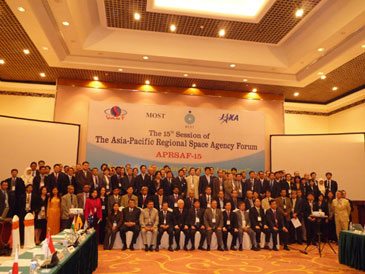
The 15th Session of the Asia-Pacific Regional Space Agency Forum (APRSAF-15) was held in Hanoi and Ha Long Bay, Vietnam, between December 9 and 12, 2008.
The following were the major issues discussed at the forum.
1. We confirmed the smooth progress of the “Sentinel Asia,” which is a project to utilize images acquired by satellites for disaster measures through data provided by the South Korean and Thai space agencies in addition to JAXA and the Indian Space Research Organization (ISRO.)
2. The STAR (Satellite Technology for the Asia-Pacific Region) program was established, and research and development on a satellite will be started collaboratively at the JAXA Sagamihara Campus in April 2009 by APRSAF participating countries.
3. The SAFE (Satellite Application for Environment) project for monitoring environmental changes by earth observation satellites including the JAXA “DAICHI” satellite was also established.
The APRSAF-16 next year will be held in Thailand.
Dec. 5, 2008 Updated
The 15th Session of the Asia-Pacific Regional Space Agency Forum (APRSAF-15)
|
The 15th Session of the Asia-Pacific Regional Space Agency Forum (APRSAF-15) will be held in Hanoi and Ha Long Bay, Vietnam, between December 9-12, 2008. In the general sessions, various issues will be discussed for cooperation in the promotion of space utilization and how to solve its challenges in the Asia Pacific region based on the forum’s theme, “Space for Sustainable Development.” More specifically, discussions are scheduled on the Space Application for Environment (SAFE) project, which is an environment monitoring system using earth observation satellites, the APRSAF satellite Project, a collaborative satellite development project by APRSAF participating countries, and the expansion of the use of the Sentinel Asia Project for utilizing satellite data for disaster monitoring in Asian countries. Many splinter meetings are also scheduled for space education, space environment utilization, communication technology using satellites, and earth observations. Many space specialists from Asian countries will get together at the APRSAF. |
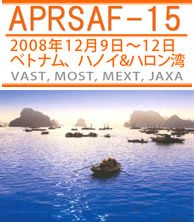 |
|---|
Nov. 27, 2008 Updated
JAXA participated in the 59th IAC
The 59th International Astronautical Congress (IAC) 2008 was held in Glasgow, Scotland, for five days between September 29 (Mon.) and October 3 (Fri.) 2008.
The IAC is held every autumn and is cosponsored by the International Astronautical Federation (IAF,) the International Academy of Astronautics (IAA) and the International Academy of Astronautics (IAA.) It is the world’s largest space conference both nominally and actually as its participants are from various global space related organizations, companies, universities and other institutions.
This year’s theme was “From Imagination to Reality,” and over 3,000 people attended from all over the world.
During the IAC general session on the first day, activities and plans for the future of each organization were explained, then a question and answer session followed, with the participation of the heads or acting heads of major organizations including President Tachikawa of JAXA, Director General Dordain of the European Space Agency (ESA,) Administrator Griffin of NASA, President MacLean of the Canadian Space Agency (CSA,) Deputy Head Medvedchikov of the Russian Federal Space Agency, Administrator Sun of the China National Space Administration (CNSA,) and Suresh Deputy Chair of the Indian Space Research Organization (ISRO.)
President Tachikawa of JAXA explained JAXA’s activities over the past year and future plans, and lectured under the theme of “the next expected big step in the space field.”
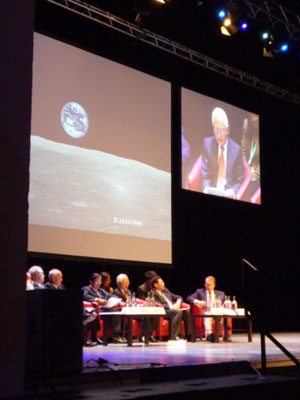
President Tachikawa making a speech with the image taken by KAGUYA at the preliminary session
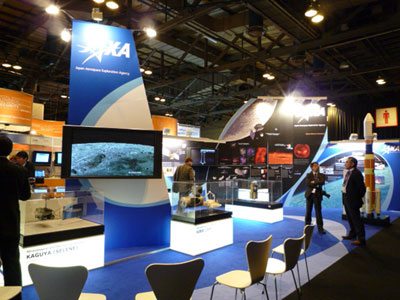
JAXA booth at the IAC exhibition area
Aug. 1, 2008 Updated
JAXA joined the ISS Heads of Agency (HOA) meeting
In July 2008, a meeting of the Heads of Agency (HOA) was held for the International Space Station project in Paris, France.
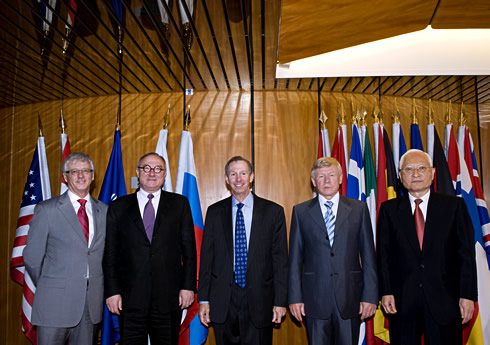
From left to right: Guy Bujold, Canadian Space Agency president;
Jean-Jacques Dordain, European Space Agency director-general;
Anatolii N. Perminov, Russian Federal Space Agency head;
and Keiji Tachikawa, Japan Aerospace Exploration Agency president. Credit: ESA.
At this meeting, the heads of each space agency from Japan , the U.S., Canada, Europe, and Russia got together to discuss the development, operations, and other issues concerning the ISS. As all the major modules from the respective space agencies had arrived at the ISS by the second launch of the Kibo in June, the participants at the HOA this time celebrated the development of the ISS so far, and talked about the possibility of operating the ISS after 2015.
Jun. 19, 2008 Updated
26th ISTS in Hamamatsu, Japan
The 26th International Symposium on Space Technology and Science (ISTS) took place on July 1 through 8, 2008 in Hamamatsu, Japan. ISTS is the biggest international conference in Japan in the area of space technology and science, and has been held basically biennially since 1959. It aims to provide specialists in space engineering, space science, space medicine and space law with a forum to exchange information through presentations and discussions, and to promote space related activities. This year, 852 participants from 26 countries attended ISTS, and around 700 papers were submitted. These figures are the highest in the ISTS history.
At the “Space Agencies Session: National Space Programs” on the first day of the 26th ISTS, Vice President Kaoru Mamiya of JAXA as well as representatives of other space agencies in Asia such as the Korea Aerospace Research Institute (KARI), Thailand’s Geo-Informatics and Space Technology Development Agency (GISTDA) and Malaysian National Space Agency (ANGKASA) gave presentations on their respective space activities, along with the National Aeronautics and Space Administration (NASA) and European Space Agency (ESA). The strong presence of Asian space agencies made this session truly suitable for an international conference held in Japan. Mr. Mamiya elaborated JAXA’s Second Mid-term Plan which is a comprehensive plan of JAXA’s space activities in the next 5 years.
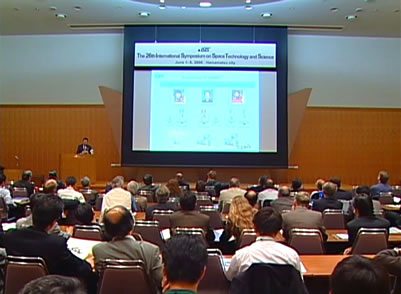
Presentation by JAXA Vice President Mamiya at “National Space Program”
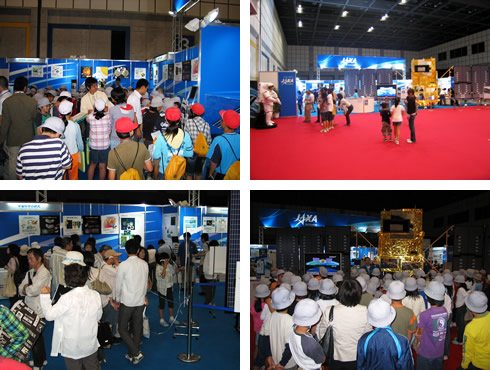
JAXA Booth at “International Space Exhibition”
The “International Space Exhibition” was also held in conjunction with the 26th ISTS. JAXA showed examples of space businesses in Japan, a full-scale model of the Greenhouse gases Observing SATellite (GOSAT), and a high-vision movie of the moon and earth taken by the SELenological and ENgineering Explorer (SELENE), “KAGUYA.” There were also exhibits displayed by 14 aerospace-related companies and 28 local companies, and 13,706 people in total visited and looked at these exhibits with interest.
The 27th ISTS which commemorates ISTS’s 50th anniversary will be held as a special “Golden Jubilee Symposium” in Tsukuba, Japan in June 2009. JAXA plans to continue its support for international activities relating to space such as ISTS.
Oct. 7, 2007 Updated
JAXA Booth Wins Best Design Award – The 58th International Space Expo –
The 58th International Astronautical Congress (IAC) was held between September 24 and 28, 2007 at Hyderabad, India.
JAXA had a booth at the “International Space Expo,” which was also held as part of the IAC. About 3,500 visitors dropped by the booth where we displayed explanatory panels as well as models of the “KAGUYA,” which was launched on September 14, the “WINDS,” the “Kibo,” and the “HTV,” which are scheduled to be launched in the future.
Exhibition booths were evaluated by the organization committee, and the JAXA booth received the Best Design Award.
Jul. 9, 2005 Updated
Former JAXA President Shuichiro Yamanouchi received the NASA medal
|
On July 5, Former JAXA President Shuichiro Yamanouchi was awarded the NASA Distinguished Public Service Medal. This medal is the highest award among those granted at the 15 NASA agencies and organizations. It is awarded to an individual who made great contributions to NASA missions. NASA decided to give the medal to Mr. Yamanouchi for his exceptional efforts and significant achievements to strengthen relations in space development between Japan and the United States, including the International Space Station Project, while serving as president of NASDA from 2001 and JAXA from 2003. NASA decided to give the medal to Mr. Yamanouchi for his exceptional efforts and significant achievements to strengthen relations in space development between Japan and the United States, including the International Space Station Project. Mr. Yamanouchi is the first receiver of the NASA medal in Japan. President Bensoussan of the Centre National d’Etudes Spatiales (CNES, France) and Director-General Rododa of the European Space Agency (ESA) also received the medal in 2001 and 2002 respectively. Photos: At the medal award ceremony at the American Embassy on July 5 |
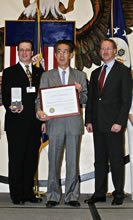 |
|---|
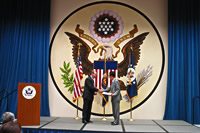
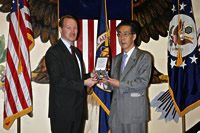
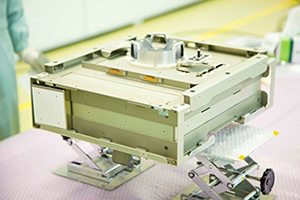

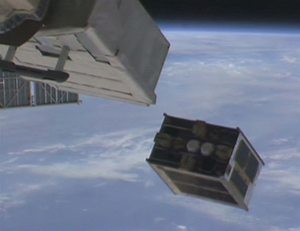


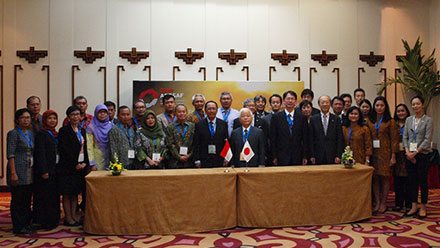
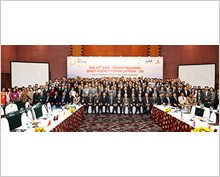


Comments are closed.